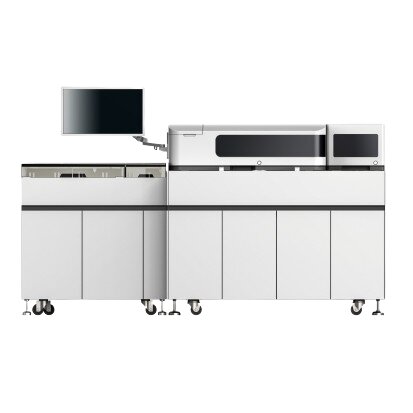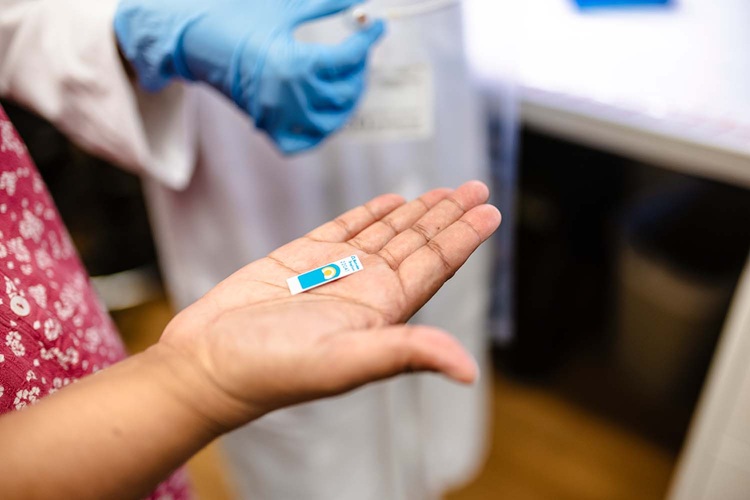POC Paper-Based Sensor Platform to Transform Cardiac Diagnostics
Posted on 12 Feb 2025
Cardiovascular diseases continue to be the leading cause of death worldwide, accounting for over 19 million fatalities annually. Early detection of myocardial infarction (MI), commonly known as a heart attack, is essential for reducing mortality rates and improving patient outcomes. However, current high-sensitivity cardiac troponin I (cTnI) assays rely on large, costly laboratory equipment that requires trained personnel, limiting access to critical cardiac diagnostics, especially in low-resource settings where prompt clinical decision-making is vital. A new innovation, a deep learning-powered chemiluminescence vertical flow assay (CL-VFA), now brings laboratory-quality cTnI testing to a portable, cost-efficient point-of-care platform.
Researchers from the University of California, Los Angeles (UCLA, Los Angeles, CA, USA) have demonstrated how integrating chemiluminescence-based biosensing, high-sensitivity imaging via a portable reader, and AI-driven data analysis allows for rapid and highly sensitive cTnI quantification for MI detection in various clinical environments. This technology has the potential to provide fast, reliable cardiac diagnostics, particularly in areas with limited resources where advanced laboratory infrastructure is unavailable. In a study published in Small, the team introduced a novel point-of-care diagnostic platform that delivers high-sensitivity troponin testing in a compact, portable, and affordable design.

This platform integrates deep learning-based computational analysis with highly sensitive chemiluminescence biosensing, enabling the detection of cTnI at concentrations as low as 0.1-0.2 pg/mL and a broad dynamic range from less than 1 pg/mL to 100 ng/mL. These features outperform existing point-of-care devices and meet the clinical standards required for high-sensitivity troponin testing, which is crucial for early MI diagnosis and risk stratification. The sensor requires only 50 µL of serum and uses a streamlined workflow, allowing medical staff to perform tests with ease. It provides cTnI results in just 25 minutes, facilitating quick clinical decision-making. The computational sensor works in two primary phases: an immunoassay phase followed by washing and a chemiluminescence signal generation phase. During the immunoassay phase, a polymerized enzyme-based conjugate binds to cTnI in the serum. In the signal generation phase, a chemiluminescent material is activated by an enzymatic reaction, producing a light signal that is captured by a custom-designed portable reader. A deep learning algorithm then processes these images to determine cTnI concentrations in the serum sample.
The team validated the sensor platform rigorously using clinical serum samples. In a blinded validation study with patient samples, the sensor showed a strong correlation with an FDA-cleared laboratory analyzer, confirming its reliability, clinical accuracy, and potential for real-world diagnostic applications. The researchers plan to expand this paper-based sensor platform by integrating multiplexed detection of several cardiovascular biomarkers, allowing for comprehensive cardiac risk assessments in a single test. The high sensitivity, portability, simplicity, and affordability of this platform make it a viable alternative to traditional laboratory-based testing, bringing high-sensitivity cardiac diagnostics closer to patients. By democratizing access to fast, reliable biomarker testing, this innovation has the potential to enhance clinical decision-making, improve patient outcomes, and expand cardiac care globally, particularly in resource-constrained and decentralized healthcare settings.
“This technology represents a major step toward democratizing high-quality cardiac diagnostics,” said Dr. Aydogan Ozcan from UCLA who led the research team. “By combining AI-powered analysis, chemiluminescence biosensing, and portable high-sensitivity imaging, we can bridge the gap between central laboratory testing and real-time clinical decision-making in emergency rooms, rural clinics, and decentralized healthcare settings.”














